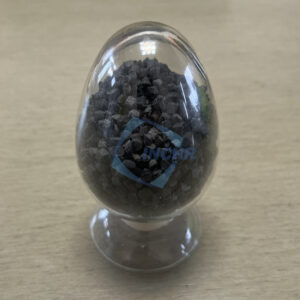Introduction of INCHR@ABS conductive | Product Catalog
ABS conductive compound is an acrylonitrile-butadiene-styrene copolymer with a certain conductivity. It is a plastic with certain conductivity obtained by modifying ordinary ABS plastic by adding conductive fillers (such as carbon black, carbon fiber, stainless steel fiber, metal powder, etc.). It not only retains some characteristics of ABS plastic itself, such as good mechanical properties and processing properties but also has conductivity, which can meet the needs of some application scenarios that require conductive or antistatic functions. This material has certain applications in electronics, automobiles, and industry.

Characteristics of INCHR@ABS conductive compound
- Good processing performance: It can be formed by conventional plastic processing methods.
- Good comprehensive performance: Based on maintaining the mechanical properties and chemical resistance of ABS resin itself, conductivity is obtained.
- Relatively low cost: Compared with other specialized conductive materials, the price is relatively cost-effective.
Application of INCHR@ABS conductive compound
- Electronic equipment housing: ABS conductive compound can be used to manufacture the housing of electronic equipment, such as computers, mobile phones, and televisions. It can provide good electrostatic protection to prevent static electricity from damaging electronic components.
- Chip packaging: In the semiconductor industry, it can be used for chip packaging, which helps protect chips from static electricity.
- Automotive field: It can be used for certain parts of automobiles, such as dashboards, control panels, etc., to provide static protection and electromagnetic shielding.
- Antistatic packaging: Antistatic packaging materials made of ABS conductive compounds can protect sensitive electronic components from static electricity during transportation and storage.
- Industrial field: In some industrial environments that are sensitive to static electricity, it can be used to manufacture tools, pallets, turnover boxes, etc. to reduce static electricity generation and accumulation.
Precautions during processing
- Drying temperature and time: The appropriate drying temperature and time should be determined according to the specific model and requirements of the ABS conductive compound to ensure that the moisture in the raw material is fully removed.
- Injection molding process parameters: The process parameters such as temperature, pressure, injection speed, etc. during the injection molding process will affect the quality and performance of the product and need to be adjusted according to the actual situation.
- Post-processing process: The selection of the post-processing process should be based on the specific requirements of the product. If the surface finish needs to be improved, grinding and other treatments can be performed.
Testing standards: Testing standards should be formulated based on the specific requirements and application scenarios of the product to ensure that the quality and performance of the product meet the requirements.




